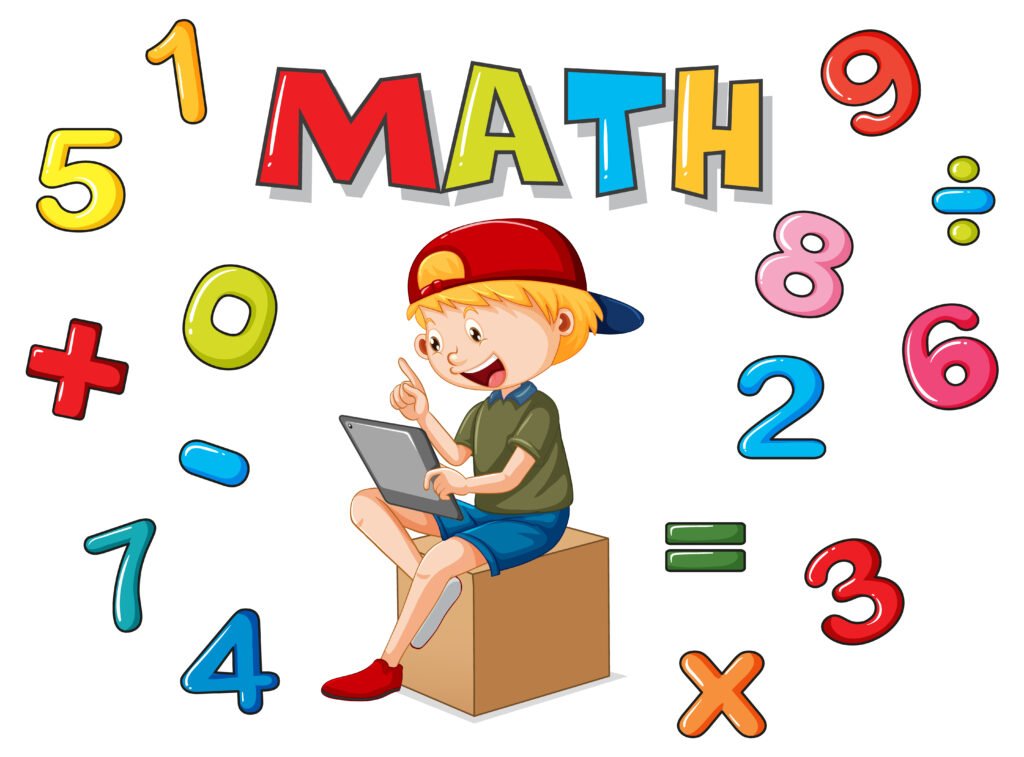Introduction
Cardinal and ordinal numbers are two fundamental concepts in mathematics that serve distinct purposes in counting and ordering. Cardinal numbers represent quantity or the how many aspects of a set, answering questions like How many apples are there? For example, in the set {1, 2, 3}, the cardinal number is 3, indicating the total number of elements.
On the other hand, ordinal numbers indicate the position or order of elements in a sequence. They answer questions like What is the first, second, or third item? The ordinal numbers for the same set, for instance, would be first, second, and third, signifying the elements’ order.
To grasp the distinction further, consider a race where participants finish first, second, and third. In this scenario, 1st, 2nd, and 3rd are ordinal numbers denoting the positions of the racers. The cardinal number, in this case, would be the total number of participants.
Cardinal numbers quantify the size of a set, while ordinal numbers signify the position or order of elements within that set. Understanding these distinctions is crucial in various fields, from mathematics to everyday activities, as it lays the foundation for accurate counting and ordering of elements.

What is Cardinal and Ordinal Numbers
Cardinal and ordinal numbers are fundamental concepts in mathematics that help us understand and express the relationships between objects and their positions. Let’s explore these two types of numbers and appreciate their significance.
Cardinal Numbers:
The Cardinal numbers represent quantity or the count of objects in a set. They answer the question, How many? For example, three is the cardinal number if you have three apples. It’s a way of expressing the size or quantity of a group. Cardinal numbers are essential for basic counting and arithmetic operations. They provide a numerical value to describe the amount of something, whether it’s the number of students in a class, books on a shelf, or cookies in a jar. Without cardinal numbers, it would be challenging to convey the concept of quantity in a precise and standardized manner.
Ordinal Numbers:
The ordinal numbers indicate the position or order of objects in a sequence. Instead of asking How many? ordinal numbers respond to the query. In what order? For instance, if you finish third in a race, your ordinal position is third. Ordinal numbers are crucial for understanding the arrangement or ranking of items. They help us organise information, such as the order of events in a story, the placement of teams in a tournament, or the ranking of individuals based on performance. Without ordinal numbers, we would struggle to describe the sequence of events or establish a hierarchy.
Importance of Understanding Cardinal and Ordinal Numbers:
- Clear Communication: The cardinal and ordinal numbers provide a universal language for expressing quantity and order. Whether you are talking about the number of items in a collection or the position of an element in a series, these concepts ensure clear communication.
- Problem Solving: In everyday tasks and more complex problem-solving scenarios, cardinal and ordinal numbers are essential. From calculating expenses to understanding data trends, these numbers are foundational to many mathematical operations.
- Foundations of Mathematics: Cardinal and ordinal numbers lay the groundwork for more advanced mathematical concepts. Without a solid understanding of these basic principles, it becomes challenging to grasp more complex topics in algebra, calculus, and beyond.
- Everyday Application: From collecting a to-do list to understanding the order of events in a timeline, cardinal and ordinal numbers are used in various aspects of our daily lives. A grasp of these concepts enhances our ability to navigate and make sense of the world around us.
Difference between Cardinal and Ordinal Numbers
Cardinal and ordinal numbers are two types of numerical representations that serve different purposes in counting and ordering.
Cardinal Numbers:
Cardinal numbers are used to express quantity or the number of items in a set. They answer the question “How many?” and represent a numerical value. For example, in the set apple, banana, or orange, the cardinal number is 3 because there are three fruits in the set. Cardinal numbers are fundamental in counting and listing items without telling any specific order.
Examples of Cardinal Numbers:
- There are 5 books on the shelf.
- She has 10 marbles in her bag.
- The classroom has 25 students.
Ordinal Numbers:
Ordinal numbers represent a sequence’s pieces’ position or order. They answer the question “In what order?” and express the rank or position of an element in a series. For instance, in a race, the first, second, and third positions are represented by ordinal numbers. Ordinal numbers are essential when you need to describe the arrangement or sequence of items.
Examples of Ordinal Numbers:
- He finished in first place in the competition.
- The red car is parked in the third spot.
- The book on the shelf is the fifth from the left.
Distinguishing Cardinal and Ordinal Numbers:
To show the contrast, consider a line of students waiting for a school bus. If you want to know how many students are in the line, you would use a cardinal number: “There are 15 students in the line.” If you want to specify the position of a particular student, you would use an ordinal number: “She is the 10th student in the line.”
In everyday language, cardinal numbers are commonly used when counting objects or describing quantities, while ordinal numbers are employed when discussing rankings, positions, or orders.
In Summary:
Cardinal Numbers: Express quantity, answer “How many?” Used in counting.
Example: Our solar system consists of eight planets.
Ordinal Numbers: Indicate position, answer “In what order?” Used in ordering or ranking.
Example: He finished in second place in the race.
Understanding the distinction between cardinal and ordinal numbers is fundamental in accurately conveying numerical information and describing the relationships between items in a set or sequence.
Examples of Ordinal Numbers
Ordinal numbers represent the order or position of elements in a sequence. They are numerical indicators of rank, often denoted by suffixes such as -st, -nd, -rd, or -th. Ordinal numbers are significant in various contexts, providing a way to express the order of items, events, or individuals. In everyday language, ordinal numbers are used to describe the placement or sequence of things. For instance, “first,” “second,” and “third” indicate the order of finish in a race or the steps in a set of instructions. They are essential in organizing information and understanding the relative positions of items.
Consider the following series of ordinal numbers:
- First
- Second
- Third
- Fourth
- Fifth
- Sixth
- Seventh
- Eighth
- Ninth
- Tenth
In writing, ordinal numbers are frequently employed in lists, rankings, or instructions. For example, “Please complete the first section before moving on to the second.” In literature, authors may use ordinal numbers to establish a chronological sequence of events, helping readers follow the storyline.
In addition to providing order, ordinal numbers are crucial in formal settings. They are used in addresses (e.g., “123 Main Street, 5th floor”), dates (e.g., “December 25th”), and rankings (e.g., “The team finished third in the competition”). Understanding ordinal numbers is fundamental for effective communication and organisation in both spoken and written language.
Examples of Cardinal Numbers
Cardinal numbers are numerical symbols that represent a quantity or count. They are fundamental in mathematics and language, serving the purpose of expressing the exact quantity of items in a set. Unlike ordinal numbers that denote a position in a sequence (like first, second, third), cardinal numbers provide a straightforward count.
The cardinal numbers include:
- One
- Two
- Three
- Four
- Five
- Six
- Seven
- Eight
- Nine
- Ten
These numbers are the building blocks of numerical communication and are extensively used in various contexts.
Cardinal numbers are essential in various contexts, such as:
- Shopping: “I need to buy five pounds of rice.”
- Time: “The meeting is scheduled for ten o’clock.”
- Quantities: “They planted twenty trees in the garden.”
- Mathematics: “The rectangle has a length of six units and a width of eight units.”
In everyday communication, business transactions, and academic settings, cardinal numbers play a crucial role in providing clarity and precision when expressing quantities, measurements, or counts. Their application is integral to effective and accurate communication across diverse fields.
Conclusion
In conclusion, cardinal and ordinal numbers play pivotal roles in our understanding and representation of quantities. Cardinal numbers express the number of objects or elements in a set, providing a clear count, while ordinal numbers indicate the position or order of elements within a sequence. In both contexts, these numerical concepts are fundamental in everyday life, mathematics, and various academic disciplines.
In practical terms, cardinal numbers are essential for basic counting, measurement, and numerical operations, forming the foundation for mathematical calculations and problem-solving. Meanwhile, ordinal numbers are crucial for describing rankings, orders, and sequences, aiding in tasks ranging from organizing data to understanding hierarchical structures.
The comprehension of cardinal and ordinal numbers is not confined to mathematical applications alone it extends to diverse fields such as linguistics, economics, and data analysis. Proficiency in these concepts enhances communication, facilitates accurate data interpretation, and fosters a deeper understanding of quantitative information.
In essence, a solid grasp of cardinal and ordinal numbers is indispensable for navigating the intricacies of both numerical and categorical information, empowering individuals to make informed decisions across a spectrum of disciplines.
For further exploration of educational content and insights, delve into the resources available on Chrysalis High.


